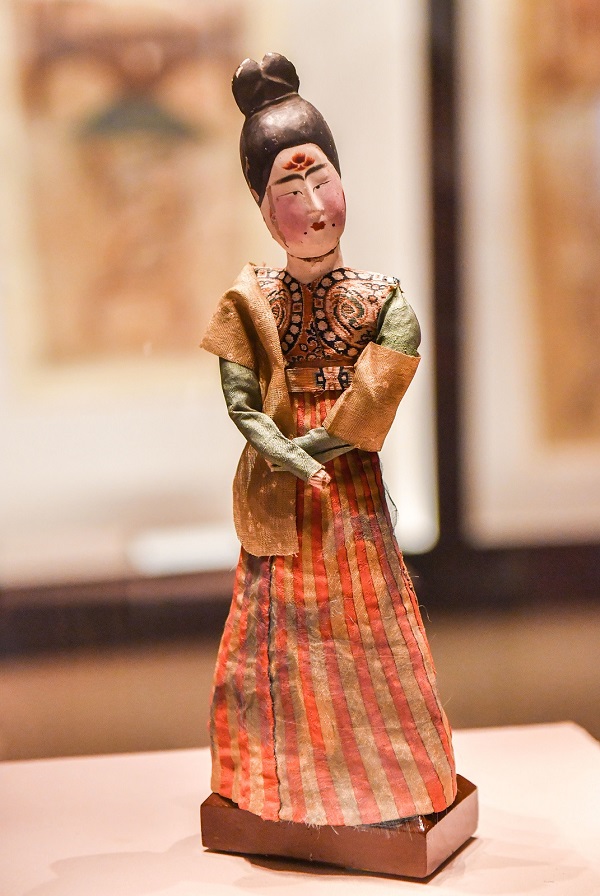Xinjiang treasure reveals Tang Dynasty dress culture and art

A painted wooden figure with silk garments, dating back to the Tang Dynasty, vividly depicts a female dancer. It is in the permanent collection of the Xinjiang Uygur Autonomous Region Museum. [Photo/IC]
The Xinjiang Uygur Autonomous Region Museum houses a unique and fascinating artifact that provides insight into the lives of Tang Dynasty (618-907) women. The painted wooden figure of a female dancer is believed to be the only surviving Tang Dynasty figure wearing clothes. The wooden carving, which was excavated from the Astana Tombs in Turpan, Xinjiang, in 1973, features silk garments that vividly depict the clothing and make-up of women from more than 1,000 years ago. The figure's face is also painted with make-up that was popular during the Tang Dynasty.
The wooden figure is a testament to the richness and diversity of Tang Dynasty culture. It offers a glimpse into the sophisticated clothing, intricate hairstyles, and exquisite make-up that were popular among women during this period. The figure, which still retains its vibrant colors and intricate details, is a valuable historical artifact that provides valuable clues about the social and cultural life of Tang Dynasty women.
The significance of the wooden figure goes beyond its aesthetic value. The carving is also an important cultural relic that reflects the influence of Central Plain culture in Xinjiang during the Tang Dynasty. Its exquisite design and skilled craftsmanship serve as a reminder of the sophistication and creativity of Tang Dynasty art and culture.
Today, the wooden figure remains an important part of the Xinjiang Uygur Autonomous Region Museum's collection, attracting visitors from around the world who are fascinated by its unique and extraordinary beauty.